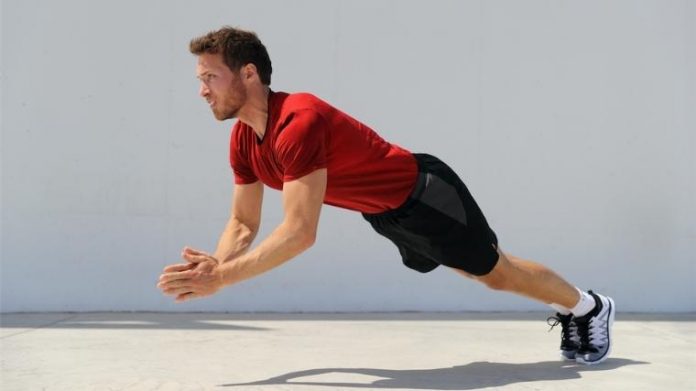It’s been well documented that regular movement can boost your mood, lower stress, and help manage anxiety and depression. But as we focus more and more on the mind-body connection, there’s a new school of thought that says certain exercise routines can induce joy by influencing our biochemistry to release “happy hormones”.
Since the 1980s, when aerobics became all the rage, we have all been bombarded with messages about the physical benefits of exercise. Even now, the new mantra is “strong is the new skinny”, and as we scroll our Instagram feeds we see influencer after influencer with perfectly toned limbs, strong cores, gymnastic-level flexibility, and no hint of cellulite.
Of course, there’s no denying that the only way to achieve such things is to get off the sofa, or away from your desk, and head to the gym, but since 2023 is the year of “soft living” and “body realism”, we are moving away from breaking our bodies and more towards protecting our mental health.
This mindset is having a huge impact on the way professionals are approaching building workouts. Dr. Kelly McGonical, a psychologist specialising in emotions who has also taught group exercises for 20 years, has developed a routine based on research which not only uses ‘joyful movements’ but elicits feelings of joy too. Only eight minutes long, the sequence focuses on movements that are inspired by light-hearted activities, such as dancing or going to a concert.
The series goes through six motions: reach, sway, bounce, shake, jump for joy, and ‘celebrate’ (which is much like tossing confetti in the air). The routine is adaptable, and Dr. Kelly suggests doing each move in a way that feels good in your mind and body; whether that be powerful, playful, or graceful. The important part is to do what feels right for you. Those who have tried the routine reported a real uplift in their emotions, but there’s a science at work too.
Researchers state that these styles of movements are found in different cultures as a way of expressing happiness. When we hear music that we love, we wave our arms around rhythmically and bounce to the beat. When our favourite sports team scores a goal, we jubilantly throw our hands in the air. Wherever in the world we’re from, these are all movements we have in common. What’s more, a study in Frontiers in Psychology showed that those who stayed in an expansive pose felt more powerful than those in a restrictive one. And anecdotally, dancing around the apartment to one’s favourite song is incredibly emotionally elevating and it releases happy hormones.
Using movement to influence your physiology and mental wellbeing is not a new concept though. There are many traditions in Eastern holistic practices that have been used throughout the centuries to bring happiness, peace, and energy. I was recently introduced to Qi Gong, a Chinese system of movements and postures that can be traced back as far as 3,000 years. The word ‘qi’ means energy, and ‘gong’ denotes movement, and together they represent energy work.
The principles behind Qi Gong lie in ancient Chinese medicine, believing that the qi guides our blood. By utilising a combination of movements, breathing, meditation and poses, the qi is unblocked and the blood circulates without impediment. When the qi is flowing through the meridians – a network of energy lines throughout the body – each organ will function at its optimum level.
So, what does this mean for our mental health? When your qi is blocked, it can lead to a downward spiral of negative thoughts, with stress and anxiety weighing heavily. Conversely, when the qi can flow, the mind-body connection will feel rebalanced and there will be more of a sense of serenity, contentment, and higher spirits.
For thousands of years, Eastern medicine has been pioneering the way when it comes to mind-body connection, but these are starting to be incorporated into Western fitness routines as well. As a busy person juggling a lot, I find that apps and online sources work best for a workout schedule, and I religiously use an app on my phone called ‘FitOn’ to stay active. It has a plethora of videos, for a multitude of goals, from different instructors, and I can easily squeeze in a session during a break. I’m constantly on there looking for new workouts to inspire me, and recently I noticed some new additions: meditation integrated into stretches.
While this is nothing new in yoga, it was usually observed by those interested in the yogic lifestyle. But this is very much an indication of the direction that fitness is going in. Exercise is no longer just about aesthetics or strength. It’s about true mind-body wellness. I tried the routines in the morning and before bed, and there has definitely been an improvement in my outlook. The types of stretches were evidently designed to influence the emotional state and, together with breathing and affirmations, “happy hormones” were released. The combination of stretches, poses, and mindfulness stimulated my body and calmed my mind. It brought down my heart rate, which reduced the anxiety and stress that I feel on daily basis with all the commitments of a hectic life, while the expansive poses aroused joy.
After putting myself through grueling workouts for years, and balancing multiple projects and deadlines with little downtime, this year I promised to be kinder to myself. I readjusted my expectations and sought new ways of improving my “whole self ”, rather than focusing on just the outside. With the implementation of joyous, emotionally enriching exercises, I find moments of pleasure amongst the chaos and the symbiotic relationship between my mind and body are improving.
I would encourage everyone to find the time – even if it’s just eight minutes – to include some happiness movements in their daily routine to release some happy hormones. Whether it’s dancing to music, a meditative workout, or simply flailing your limbs, your mind and body connection will become fortified and you will find your joy.






























